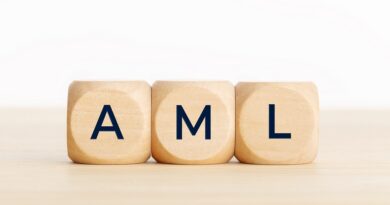MBTI: what drives an ENPF?
In this article, we’ll offer an overview of what the MBTI is and the key areas of behavioral preferences it deals with, before looking in more detail at what typically drives one specific type identified by an MBTI assessment: the ENFP Personality Type.
What is the MBTI?
The Myers-Briggs Type Indicator, or MBTI as it’s often called, is the world’s most widely used psychometric tool, with over 2 million tests carried out each year. The original concept, highly influenced by the work of Carl Jung, was developed in the 1920s. The test was launched in 1962, after decades of research and testing to validate the theory behind it.
What is it used for?
The benefit of the tool is that it enables users to develop greater self –awareness, by helping them to understand how their personality influences their behavior, preferences, and even the work environment that can suit them best.
It is also widely used in organizations to help leaders and others understand the behavior and motivations of those they work with. While it doesn’t claim to be able to select the correct person for a given role, it’s clear that people with certain personality preferences will fit more easily into certain roles than others.
What exactly is the test?
Originally, users would complete a paper-based assessment, however, now this can be done online and results delivered in around 45 minutes.
While there are now many other psychometric tools online, the MBTI is still, by far the most trusted, due to the sheer volume of research and validation behind it.
What are the key personality areas the MBTI identifies?
The MBTI identifies 4 key areas of preference. Below is a very simplified overview.
· Extroversion (E) vs. Introversion (I)
Do you take energy from your interactions with others, or is your internal world more significant for you?
· Sensing (S) vs. Intuition (N)
This relates to your preferences for learning and gathering information about the world around you. People with a strong preference for sensing tend to live in the here-and-now, enjoying the current reality. Those who are more intuitive tend to seek deeper or hidden meanings in events.
· Thinking (T) vs. Feeling (F)
While someone with a strong preference for (T) will pride themselves on being rational and logical, an (F) will prioritize values and find solutions which avoid conflict.
· Judging (J) vs. Perceiving (P)
If you have a (J) preference, it doesn’t imply that you are judgmental of others. Rather that you are likely to be someone who likes structure, takes decisions, and focuses on a task until it’s finished.
Perceivers prefer to keep their options open until the last minute, and may find it easy to abandon tasks in progress, in favor of something new and more interesting.
What is an ENFP personality type?
Based on the above, we can see that a typical ENPF personality type is likely to display the following characteristics:
· Extroversion
· Intuition
· Feeling
· Perceiving
The Myers-Briggs online site summarizes the ENFP type as an ‘imaginative motivator’. They love to share ideas, stories, and idealistic aspirations with others.
The preferred working environment for an ENFP
As a sense of personal freedom is vital them, they are not ideal candidates for the world of productivity monitoring. They prefer to connect deeply with others. While they are prized for their creativity and enthusiasm, they are not detail-oriented, and hate repetitive or routine tasks. As natural enemies of routine paperwork and spreadsheets, they may seem disorganized, leaving things until the last minute, or avoiding what they don’t enjoy. To get the best out of them, it’s important to let them use their imagination to develop new projects or innovative solutions, in a relaxed and friendly environment
What creates stress for an ENFP, and how are they likely to react?
When an ENFP experiences stress, they may either take on too much work or hesitate to get started on anything. However, their inability to solve a problem that’s worrying them will cause the stress to mount. It may be noticeable that their typical optimism and enthusiasm is replaced with irritability and disengagement from work or those around them
However, ENFPs who experience prolonged or severe stress may become even less recognizable, depressed, and incapable of seeing any hope of the situation being resolved. Normally such skilled communicators, they may start to seem less coherent. They may even seek to re-gain control over the world by throwing themselves into routine tasks which would normally hold no interest for them.
Therefore, it’s important for their leader to recognize the causes for their change in behavior and to restore the balance, so that the ENFP can once again play to their strengths and add maximum value to the team.











